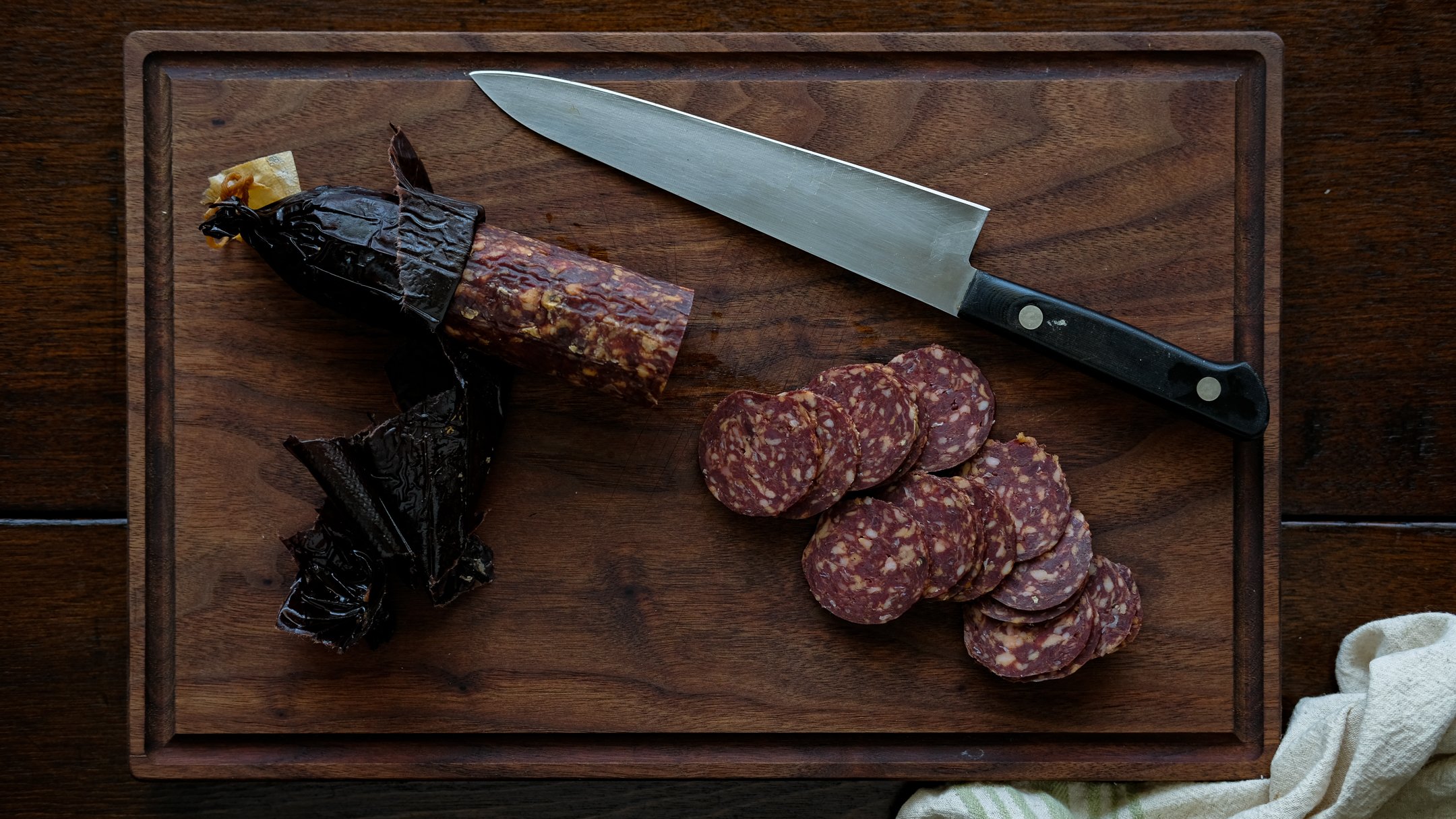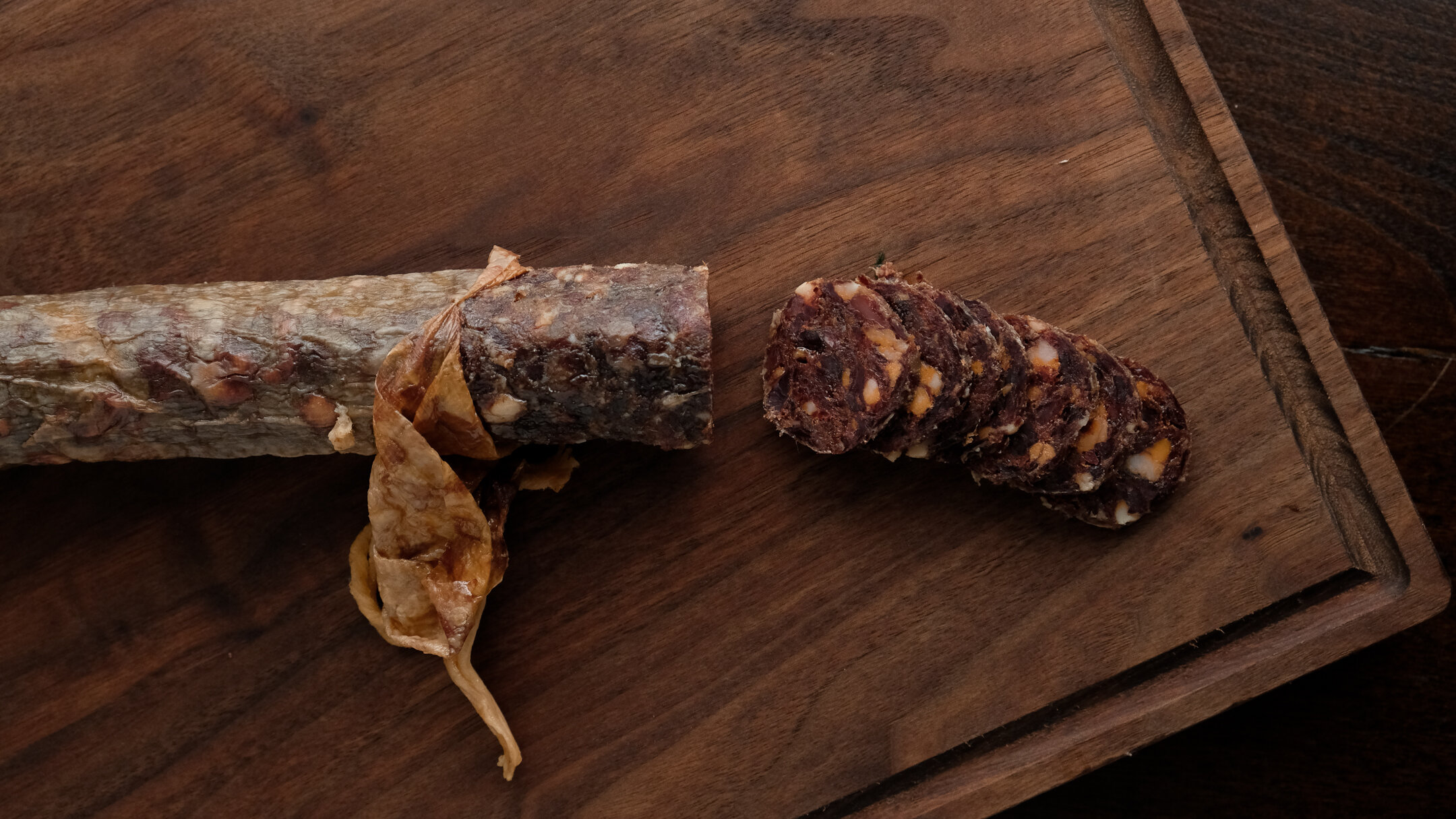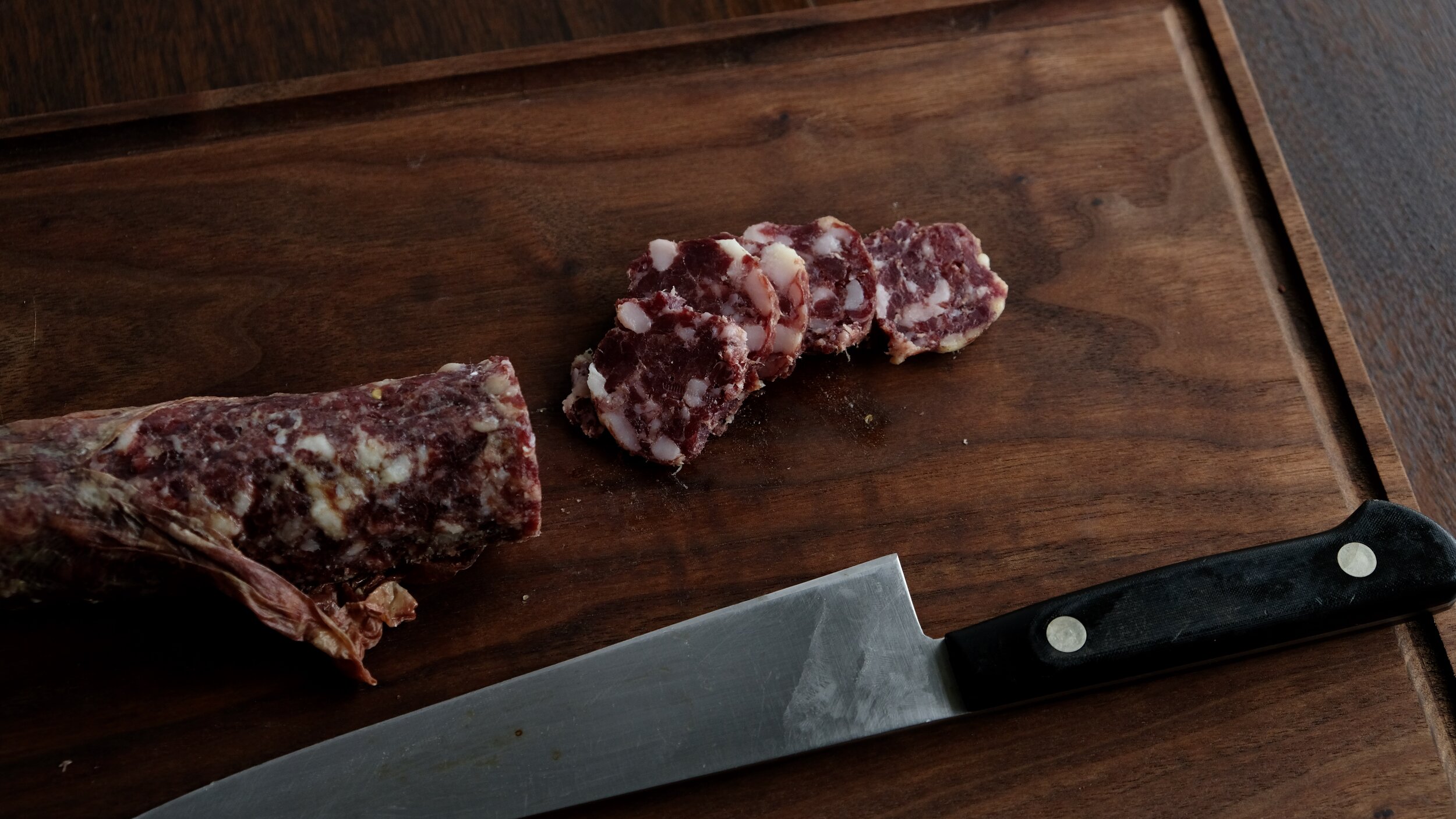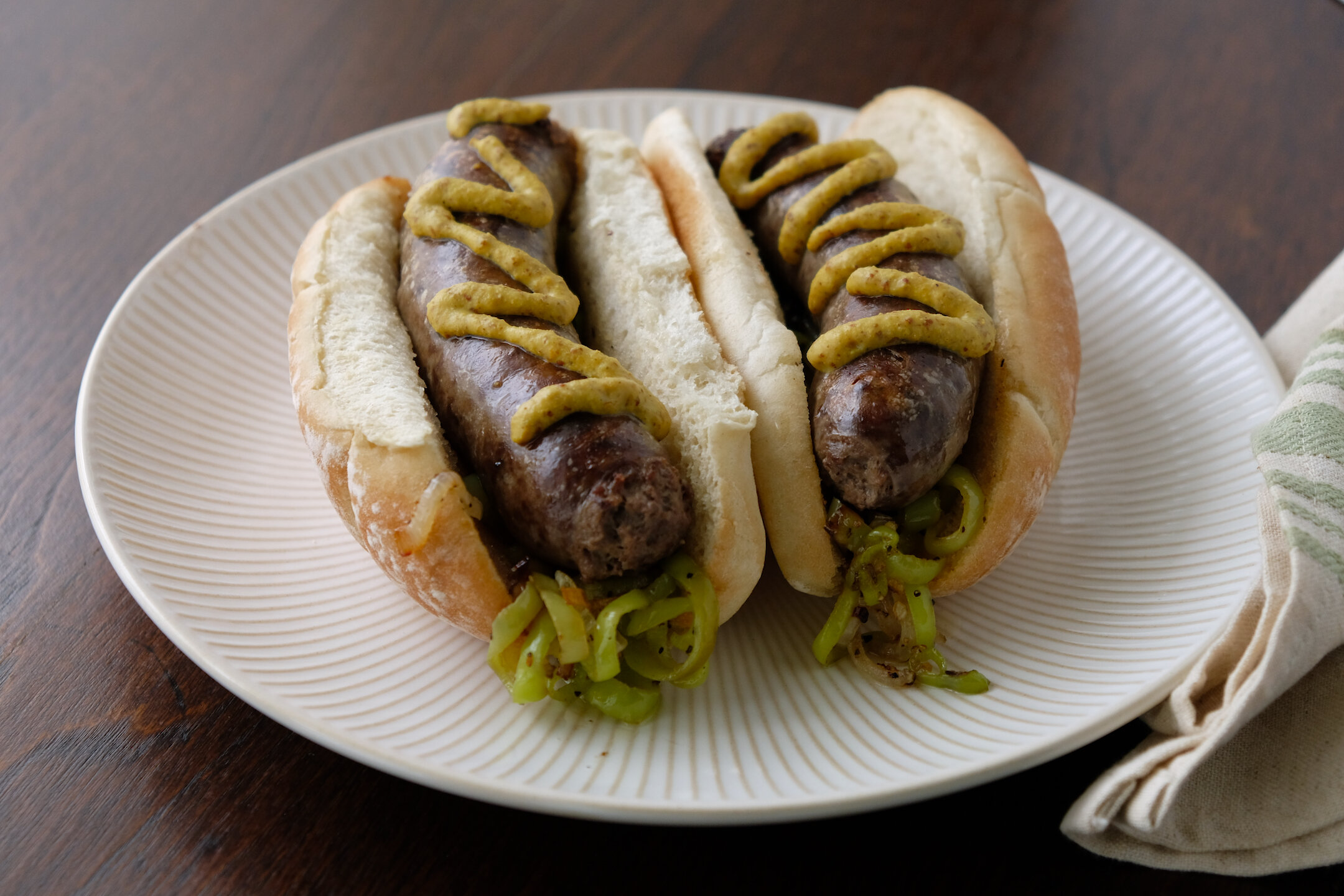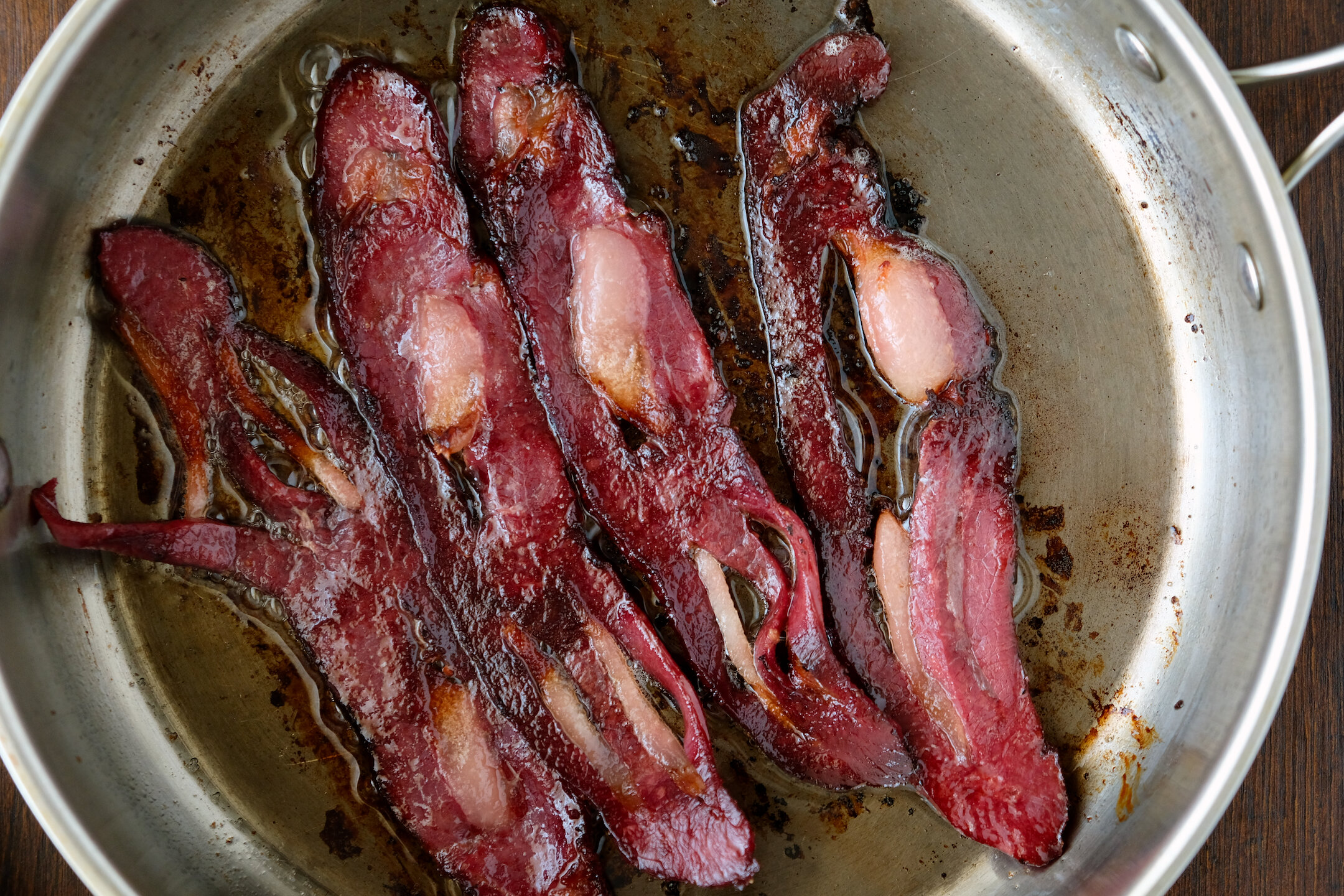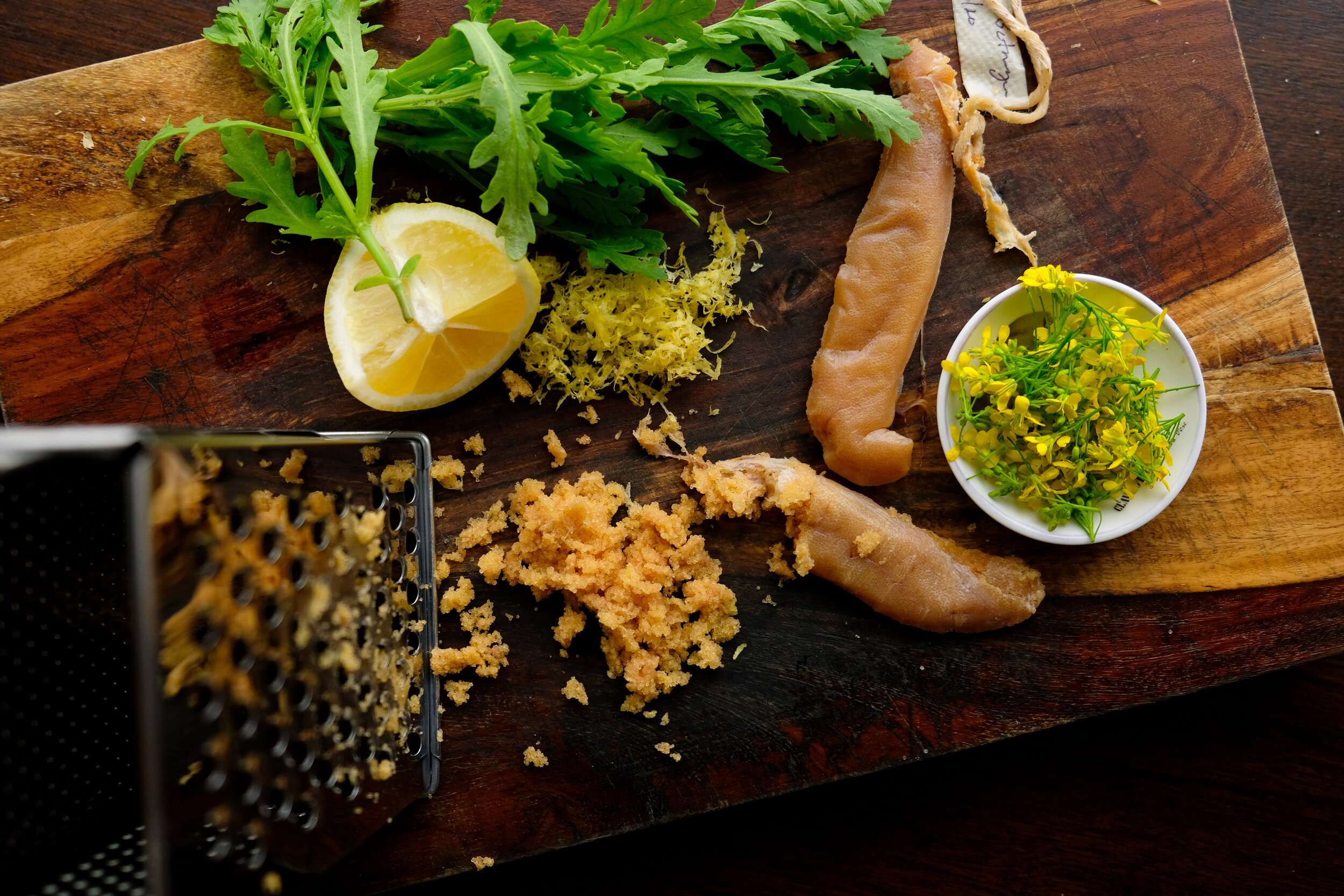Beaver Tail Lardo

For anyone who’s ever trapped and eaten beaver, the big question is always the tail, or flapper. If a person has heard of eating beaver, most often, they have heard somewhere that mountain men used to roast the tails over open flames until the skin cracked. It was supposed to be a delicacy.
Our experience with beaver tails had not been consistent with the term “delicacy.” We’ve tried them a few ways, but they had always been kind of fatty and gristly, with nothing much to recommend them. Not bad, and I could see it in a survival situation, but not great.
Enter the lardo. A beaver’s tail is almost entirely fat, with a little connective tissue. We figured that if the Italians could cure whole slabs of pork fat into a delicious charcuterie, we could probably do the same with some beaver tails. This was one of our earlier whole-muscle charcuterie projects. The first time we made it, around a year ago, it came out a little too sweet and dry. We used a salt/sugar dry brine, and then hung it in the refrigerator. It resulted in a product that was okay but not great.
This past trapping season, we had the fortune of trapping a few beavers on public land, so we had more flappers to experiment with. For this batch of beaver tail lardo, we used the salt box method instead of a salt/sugar dry brine. The salt box method is pretty simple- you basically put a bunch of salt in a box and roll the meat around in it until it won’t take any more salt. Then, put some more salt on top, put something flat and heavy-ish on top, and weigh it down. We added some aromatics from the garden to the salt, then salted the skinned beaver tails and refrigerated them for 14 days. After that, we rinsed and dried them off, then hung them in the cure chamber for a week and a half just to finish drying a bit.
The results are pretty damn good. Not quite as silky in texture as pork fat lardo, but with all the same qualities that make it so great. Slice it thin and serve over crusty bread, or add to any dish that needs a pop of fattiness.
We made a white pizza with parmesan, garlic, parsley, boquerones and some beaver lardo, sliced thin.
Beaver Tail Lardo
Prep time: 15 minutes active, 21 days inactive
Skin the beaver tails.
Prepare a salt box (exactly what it sounds like). Mix in some aromatics- rosemary, thyme, garlic, whatever you’d like.
Roll the beaver tail in the salt until it is completely covered. Add another layer over top to cover it. Add something on top to weigh it down, and refrigerate for 14 days.
Just rinsed, before hanging in cure chamber
after a few weeks in the chamber
After it is done curing, rinse off the salt, pat dry, and hang in the cure chamber for 12-20 days. We didn’t look for a particular amount of weight loss. When we pulled the beaver tail from the salt box, it was still pretty soft and the texture was still like raw fat. After a week or so in the curing chamber, there was enough moisture loss where it started to firm up and have a more sliceable texture. We just kept testing it until it got to where we wanted it.
If the outside gets too dry by the time you’ve reached the right texture, vacuum seal it and let it equalize in the refrigerator for 2 weeks.This will help bring the moisture from the center of the meat to the outside.

















